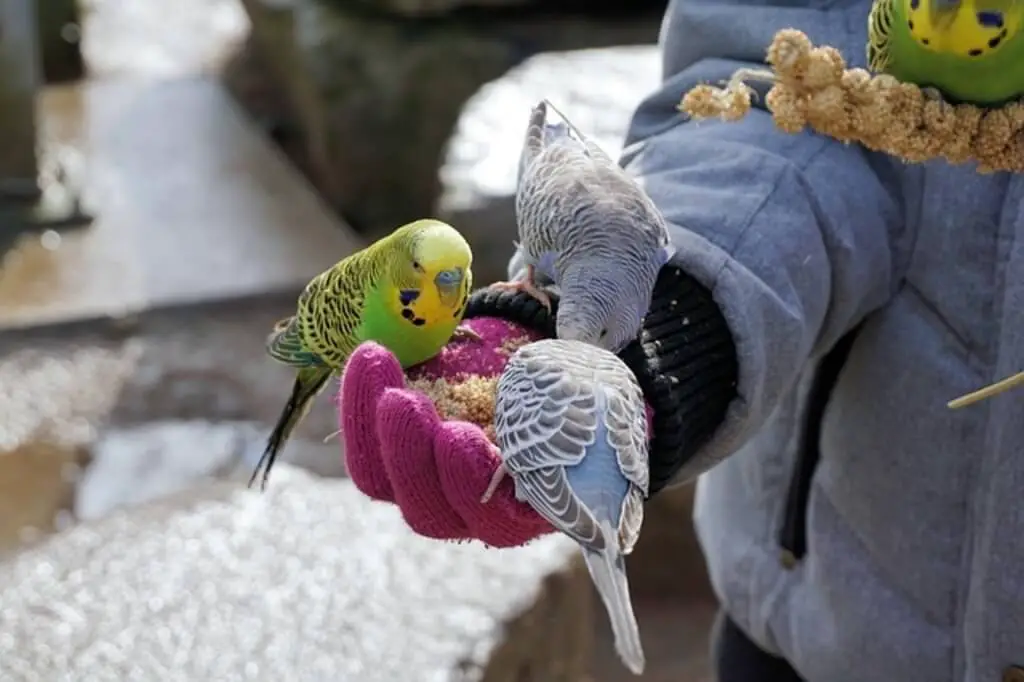Quinoa, a superfood celebrated for its nutritional value, has soared in popularity among health-conscious humans. Yet, one question lingers in the minds of bird lovers and enthusiasts alike: Can birds eat quinoa?
In this comprehensive guide, we delve into the intriguing world of avian dining habits to uncover whether these feathered friends can partake in the quinoa feast.
Table of Contents
- 1 Key Takeaways
- 2 Can Birds Eat Quinoa?
- 3 Is Quinoa Suitable for Wild Birds, Garden Birds, and Baby Birds?
- 4 Why Is Quinoa Healthy for Birds?
- 5 Can You Feed Raw, Uncooked Quinoa To Wild Birds?
- 6 Which Quinoa Type Is Best?
- 7 How to Prepare Quinoa for Birds?
- 8 What Are Some Quinoa Alternatives?
- 9 How to Sprout Quinoa for Birds?
- 10 What Birds Eat Quinoa?
- 11 Can Wild Birds Eat Chia Seeds?
- 12 Can Birds Eat Lentils?
- 13 Can Wild Birds Eat Farro?
- 14 Can Birds Eat Oats?
- 15 Can Birds Eat Bulgur Wheat?
- 16 Can Pigeons Eat Quinoa?
- 17 Can Parrots Eat Quinoa?
- 18 Can Parakeets Eat Quinoa?
- 19 Can Budgies Eat Quinoa?
- 20 Can Cockatiels Eat Quinoa?
- 21 Author
Key Takeaways
- Many birds can safely eat quinoa as part of a balanced diet.
- It’s essential to serve quinoa plain, thoroughly cooked, and soaked to aid digestion.
- Quinoa provides birds with valuable nutrients.
- Ensure quinoa doesn’t replace essential elements of their diet.
- Consult with an avian veterinarian for personalized dietary advice.
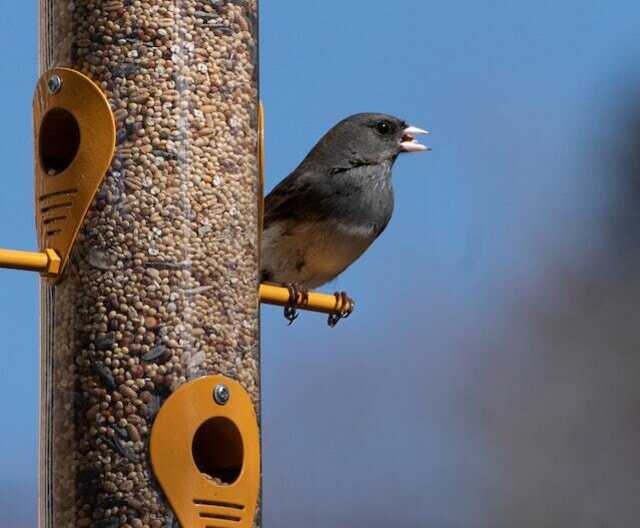
Can Birds Eat Quinoa?
Yes, birds can eat quinoa. It’s important to note that while you may not typically observe birds consuming quinoa in the wild, it can be a beneficial addition to their diet. Naturally occurring quinoa has a protective coating called saponin, which deters birds and wildlife due to its bitter taste and potential health risks.
Understanding Saponin: Saponin acts as an antinutrient, which, when ingested, can negatively affect avian digestive health by potentially weakening the gastrointestinal lining and contributing to conditions like leaky gut syndrome.
Safe Preparation: To make quinoa a safe and healthy snack for your pet birds, it’s essential to remove the saponin. This can be achieved through a simple process of soaking the quinoa seeds. Once the bitter coating is removed, quinoa becomes a nutritious and palatable treat that your feathered friends will enjoy.
Is Quinoa Suitable for Wild Birds, Garden Birds, and Baby Birds?
Quinoa can be a nutritious treat for garden birds and a healthy option for baby birds when properly prepared. While it may not be a natural part of their wild diet due to its saponin coating, which deters many birds and animals, you can make it suitable by removing the saponin. Soaking the quinoa seeds ensures its safety and attractiveness to your feathered friends.
However, for baby birds, especially those still developing their digestive systems, raw quinoa seeds may not be the best choice. To make it suitable for them, consider cooking the quinoa until it’s soft and mashing it for easier consumption. Baby birds primarily consume regurgitated food, so it’s crucial to avoid providing them with hard grains.
Introducing a well-balanced diet that includes quinoa to baby birds is advisable, alongside their primary food sources. Always take into account the specific dietary requirements of the bird species you’re caring for to promote healthy growth and development.
Why Is Quinoa Healthy for Birds?
Quinoa is a nutritious option for birds due to its rich vitamin content, essential minerals, flavonoids, lysine for growth, omega-3 fatty acids for heart health, dietary fiber for digestion, and high-quality protein for energy. These elements support overall avian health and vitality.
Vitamins: Quinoa boasts a rich supply of essential vitamins, including various B-complex vitamins such as B1 (thiamine), B2 (riboflavin), B3 (niacin), and B6 (pyridoxine). These vitamins contribute to overall metabolic function, energy production, and the maintenance of healthy feathers and skin. Quinoa is also rich in vitamin E, a nutrient that supports egg production and reproductive health.
Minerals: Quinoa contains crucial minerals, notably iodine, cooper, zinc, magnesium, calcium, potassium, phosphorus, selenium and manganese. These minerals play pivotal roles in bone formation, nerve function, and maintaining proper fluid balance in birds’ bodies. Calcium plays a crucial role in avian reproduction, as it contributes significantly to the formation of the sturdy outer shell of eggs.
Flavonoids: Quinoa is a source of flavonoids quercetin and kaempferol, natural compounds with antioxidant properties. Antioxidants aid in neutralizing harmful free radicals, potentially reducing oxidative stress and improving immunity in birds.
Lysine: An essential amino acid, lysine, is present in quinoa, supporting growth and tissue repair in avian organisms.
Omega-3 Fatty Acids: Quinoa is a valuable source of heart-healthy omega-3 fatty acids for birds. These essential fats play a crucial role in avian cardiovascular health, supporting heart function, reducing inflammation, and aiding in various biological processes, including hatching eggs, enhancing skin and plumage, and facilitating the absorption of vitamins such as A, D, E, and K.
Dietary Fiber: Quinoa’s dietary fiber content enhances avian digestion and may help mitigate issues related to constipation. Fiber supports the movement of food through the digestive tract.
Protein: As an outstanding plant-based protein source, quinoa offers a high-quality protein that’s essential for avian energy, muscle development, and overall vitality. This protein content is particularly significant for birds that rely on insect and seed-based diets.
Including quinoa in a bird’s diet can contribute to their overall well-being, ensuring they receive a diversity of essential nutrients essential for their health and vitality.
Can You Feed Raw, Uncooked Quinoa To Wild Birds?
It’s generally not advisable to feed raw, uncooked quinoa to wild birds. Raw quinoa contains saponins, natural compounds that can be toxic to birds and other animals if consumed in large quantities. Saponins can cause digestive issues and, in extreme cases, be harmful to the bird’s health.
To make quinoa safe and suitable for birds, it’s recommended to cook it before offering it as bird food. Cooking quinoa helps to neutralize saponins and makes it easier for birds to digest. You can prepare quinoa by boiling it in water, but ensure it cools down before serving it to the birds.
Feeding birds a cooked, plain, and unsalted quinoa can provide them with a nutritious treat while avoiding potential harm associated with raw quinoa. Always remember to offer a varied diet to wild birds to meet their diverse nutritional needs.
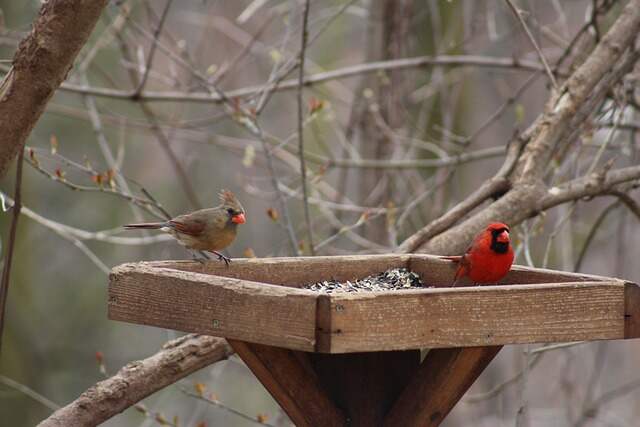
Which Quinoa Type Is Best?
The type and color of quinoa that are best for birds primarily depend on the specific nutritional requirements of the bird species you’re trying to feed. Quinoa, in general, is a nutritious food source for birds due to its rich nutrient profile. Here’s a breakdown:
- Red Quinoa: Red quinoa is known to have higher flavonoid content compared to other quinoa varieties. Flavonoids possess antioxidant properties, which can be beneficial for overall avian health. Birds that need an extra antioxidant boost might find red quinoa particularly useful.
- Other Quinoa Varieties: While red quinoa is noteworthy for its flavonoid content, various quinoa types, including white and black quinoa, also provide essential nutrients. These include vitamins, minerals, protein, and fiber. Birds with diverse dietary needs can benefit from a mix of quinoa colors.
It’s important to consider the specific dietary requirements of the birds you’re catering to. Providing a variety of quinoa colors ensures that they receive a well-rounded nutritional intake, benefiting from a wide range of nutrients and antioxidants.
How to Prepare Quinoa for Birds?
Quinoa is a nutritious addition to wild birds’ diets, but it’s essential to prepare it correctly. Here are four methods to ensure birds enjoy quinoa safely:
Cooked Quinoa:
- Boiling Method: Boil quinoa until it’s soft and has absorbed water.
- Steaming Method: Steam quinoa until it’s soft and fluffy.
- Cool and Serve: Allow cooked quinoa to cool before offering it to the birds. This softens the seeds and makes them easier to digest.
Sprouted Quinoa:
- Soak and Rinse: Soak quinoa seeds for several hours and rinse them to remove saponin.
- Sprouting: Place seeds in a container with a lid, rinse daily, and allow them to sprout.
- Offer Sprouts: When sprouts are about 1/4-inch long, provide them to the birds. They’re packed with nutrients and easier to digest.
Quinoa Flakes:
- Purchase Flakes: Quinoa flakes are readily available and a convenient option.
- Direct Feeding: You can offer quinoa flakes directly to birds without any preparation.
Dry Uncooked Quinoa Seeds:
- Rinse and Soak: Rinse uncooked quinoa to remove the bitter saponin coating. Soak it to soften.
- Serve Soaked Seeds: Offer soaked, uncooked quinoa seeds to birds. These seeds retain their nutritional value and are easier to eat.
Remember, always provide quinoa in moderation as part of a balanced diet for wild birds. Observe the birds’ response and adjust the quantity accordingly to prevent waste.
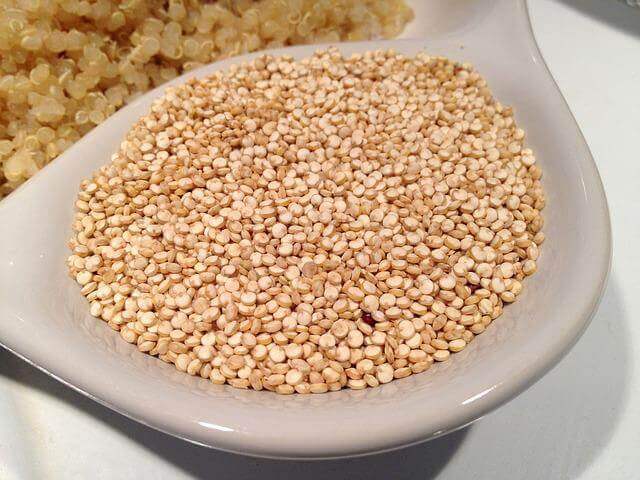
What Are Some Quinoa Alternatives?
While quinoa is a nutritious option for feeding birds, several other alternatives can be used to provide a diverse and healthy diet for your avian visitors. Here are some quinoa alternatives:
- Sunflower Seeds: These are a bird favorite and provide essential fats and protein.
- Millet: Different types of millet, like white proso millet, are well-received by a variety of bird species.
- Safflower Seeds: Safflower seeds are enjoyed by cardinals and other birds while being less attractive to squirrels.
- Cracked Corn: Ground corn is an affordable and popular option, especially in the winter months.
- Nyjer (Thistle) Seeds: Ideal for attracting finches, these seeds are tiny and nutrient-rich.
- Peanuts: Unsalted, roasted peanuts are a high-energy food suitable for many birds.
- Mealworms: Dried mealworms are a protein-packed treat for insect-eating birds.
- Fruit: Birds love fresh or dried fruit like raisins, apple slices, or oranges.
- Vegetables: Bits of vegetables, such as carrots and peas, can provide essential nutrients.
- Nectar: For hummingbirds and orioles, a nectar solution made from sugar and water is an excellent choice.
Remember to provide a variety of foods to cater to the diverse diets of different bird species and adapt your offerings seasonally. Fresh water is also crucial for birds, so ensure a water source is readily available in your bird-feeding area.
How to Sprout Quinoa for Birds?
Sprouting quinoa enhances its nutritional value, and is an easy way to give your birds a healthy snack or meal. Quinoa is a highly digestible seed that can provide your bird with essential nutrients like protein and fiber. Here’s how to do it:
Materials Needed:
- Raw quinoa seeds
- A glass or plastic container (avoid metal)
- A fine mesh strainer or sprouting lid
- Clean water
Steps:
- Rinse the Quinoa: Measure the desired amount of quinoa seeds and rinse them thoroughly in a fine mesh strainer under running water. This helps remove any natural bitterness from the seeds.
- Soak the Quinoa: Place the rinsed quinoa in a glass or plastic container. Add clean water at a ratio of about 2 to 1 (two parts water to one part quinoa). Let it soak for 8-12 hours or overnight.
- Drain and Rinse: After soaking, drain the quinoa seeds in your strainer or sprouting lid, allowing any excess water to drain away. Rinse the seeds with fresh water and drain again.
- Sprouting Stage: Keep the quinoa seeds in the container, but tilt it or use an angle to ensure any remaining water continues to drain out. Cover with a breathable cloth, like a thin kitchen towel. Store in a room with consistent room temperature and indirect light.
- Rinse Regularly: Every 8-12 hours, rinse the quinoa with fresh water, drain thoroughly, and recover. This helps prevent mold and encourages sprouting.
- Wait for Sprouts: After 1-2 days of regular rinsing, you’ll start to see tiny sprouts emerging from the quinoa seeds. Continue to rinse and let them grow until they reach your desired sprout length, typically 1/8 to 1/4 inch.
- Feed the Birds: Once sprouted, quinoa is ready to be served to your feathered friends. Be sure to provide only as much as they can consume in a day or two to keep it fresh.
Sprouted quinoa is a nutritious and easily digestible treat for birds. It’s an excellent addition to their diet, especially during the breeding season or in colder months when natural food sources may be scarce.
What Birds Eat Quinoa?
Numerous bird species have a fondness for quinoa, appreciating it as a nutritious dietary addition. Here are ten types of birds known to relish quinoa:
- Doves: Commonly, mourning doves and other dove species are frequently spotted foraging on quinoa, either on the ground or at bird feeders.
- Pigeons: Urban areas and open spaces often host common pigeons (rock doves), which have a liking for quinoa.
- Finches: Various finch species, including house finches and goldfinches, frequently visit bird feeders, where they enjoy quinoa treats.
- Sparrows: House sparrows and white-crowned sparrows are adaptable birds with a taste for quinoa found in diverse habitats.
- Poultry: Chickens, turkeys, and other domesticated birds also appreciate quinoa as a nutritious component of their diets.
- Parrots: Pet parrots, such as budgerigars and cockatiels, can benefit from quinoa as part of their well-rounded nutrition.
- Jays: Some jay species, like blue jays, have been observed relishing quinoa, especially when provided at bird feeders.
- Cardinals: Northern cardinals, with their striking red plumage, are among the birds known to enjoy quinoa offerings.
- Woodpeckers: Certain woodpecker species, such as red-bellied woodpeckers, have demonstrated an affinity for quinoa when made available.
- Siskins: Pine siskins and other small songbirds are occasionally seen partaking in quinoa meals offered through feeders.
These birds vary in size and habitat but share a common appreciation for the nutritional value of quinoa. When feeding wild birds, always ensure it’s prepared in a suitable form for their consumption, such as cooked or sprouted.
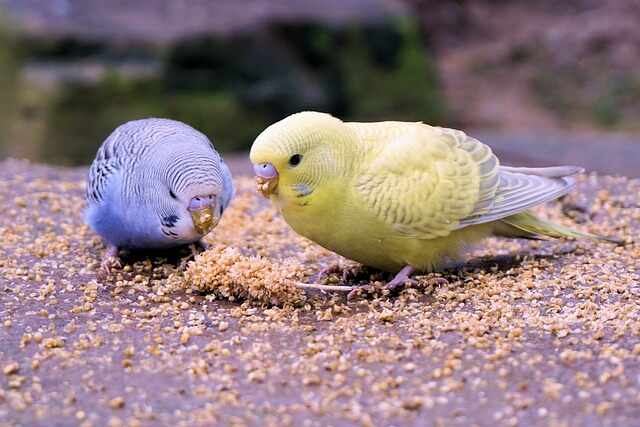
Can Wild Birds Eat Chia Seeds?
Chia seeds are a great source of protein, fiber, and omega-3 fatty acids for birds. They can be eaten whole or ground up and added to the bird’s food. Some birds, like cardinals and chickadees, seem to enjoy chia seeds.
Other birds, such as crows and ravens, may not eat them at all. It is always best to give your bird a small amount to see if they like it before adding too much.
Can Birds Eat Lentils?
Lentils may not be the first thing that comes to mind when you think of a bird food, but they are actually a great option for many species of birds. Lentils can be crushed and fed to wild birds or even used as a base for bird seed mixes.
They are an excellent source of protein and fiber, and many birds enjoy them. Some common lentil feeders include quail, pheasants, ducks, geese and parakeets.
Can Wild Birds Eat Farro?
It’s no secret that wild birds enjoy a healthy diet that includes plenty of grains. One such grain is farro, which can be found in many bird-friendly grocery stores.
However, before you feed your feathered friends a dish of farro, you should be aware that it can be difficult for them to husk the tough hulls. So cooking is recommended for those who want to give their feathered friends a farro feast!
Can Birds Eat Oats?
A nutritious food source for many birds, oats can be enjoyed by both pet and wild birds. Oats are a great source of energy and provide many essential nutrients.
However, uncooked oats are especially beneficial to birds because they retain more of their nutritional value than when cooked.
Can Birds Eat Bulgur Wheat?
Birds rely on a variety of foods to sustain them, including insects, seeds, and other small pieces of vegetation. Bulgur wheat is an excellent food source for birds because it is nutritious and easy to digest.
Bulgur is made from finely ground wheat. It can be found in store-bought products or in some grocery stores as a specialty item. Some birds enjoy eating bulgur wheat, including finches, canaries, parakeets, and sparrows.
When fed a diet rich in this type of food, these animals tend to have healthier diets overall and are less likely to develop diseases. Bulgur also makes excellent supplemental food for birds that live in captivity or who live on a restricted diet.
Can Pigeons Eat Quinoa?
Pigeons can eat quinoa, but it’s best to soak and cook it. Soaking softens the grains and aids digestion. Ensure quinoa is part of a balanced pigeon diet, as they need various foods for nutrition.
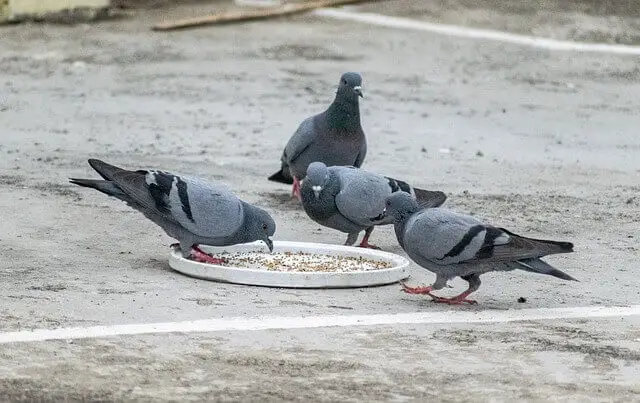
Can Parrots Eat Quinoa?
Parrots can indeed savor quinoa as a nutritious component of their diet when cooked thoroughly and offered without any seasoning. While it can be a part of their balanced meals, it should be complemented with other vital nutrients to meet their dietary requirements.
For personalized dietary advice tailored to your parrot’s unique needs, consulting with an avian veterinarian or a bird nutrition specialist is highly recommended.
Always consult with a avian veterinarian or an expert in bird nutrition to establish a suitable diet for your parrot’s specific needs.
Can Parakeets Eat Quinoa?
Absolutely, parakeets can enjoy quinoa as a wholesome addition to their diet. Ensure it’s cooked without any seasoning or additives and is served in moderation. This superfood provides a variety of nutrients beneficial for parakeets.
However, it should be part of a balanced diet alongside other seeds, fresh vegetables, and fruits. Always prioritize your parakeet’s nutritional needs and consult with a veterinarian for personalized dietary recommendations.
Can Budgies Eat Quinoa?
Budgies can enjoy cooked quinoa in moderation as a nutritious addition to their diet. Ensure the quinoa is well-cooked and unseasoned before serving, and offer it alongside their regular balanced meals to provide dietary variety.
Consulting with an avian veterinarian for personalized nutritional guidance is advisable to meet your budgie’s specific dietary needs.
Can Cockatiels Eat Quinoa?
Cockatiels can safely consume quinoa as a part of their diet, provided it’s well-cooked and plain. Quinoa can be a nutritious addition, offering essential vitamins and minerals. Yet, it should be just one element in a balanced diet, which may also include fruits, vegetables, and specially formulated bird pellets.
It’s important to monitor their intake and ensure it doesn’t replace the primary elements of their diet. For tailored dietary advice or if you have concerns about your cockatiel’s nutrition, consulting with an avian veterinarian is recommended.

